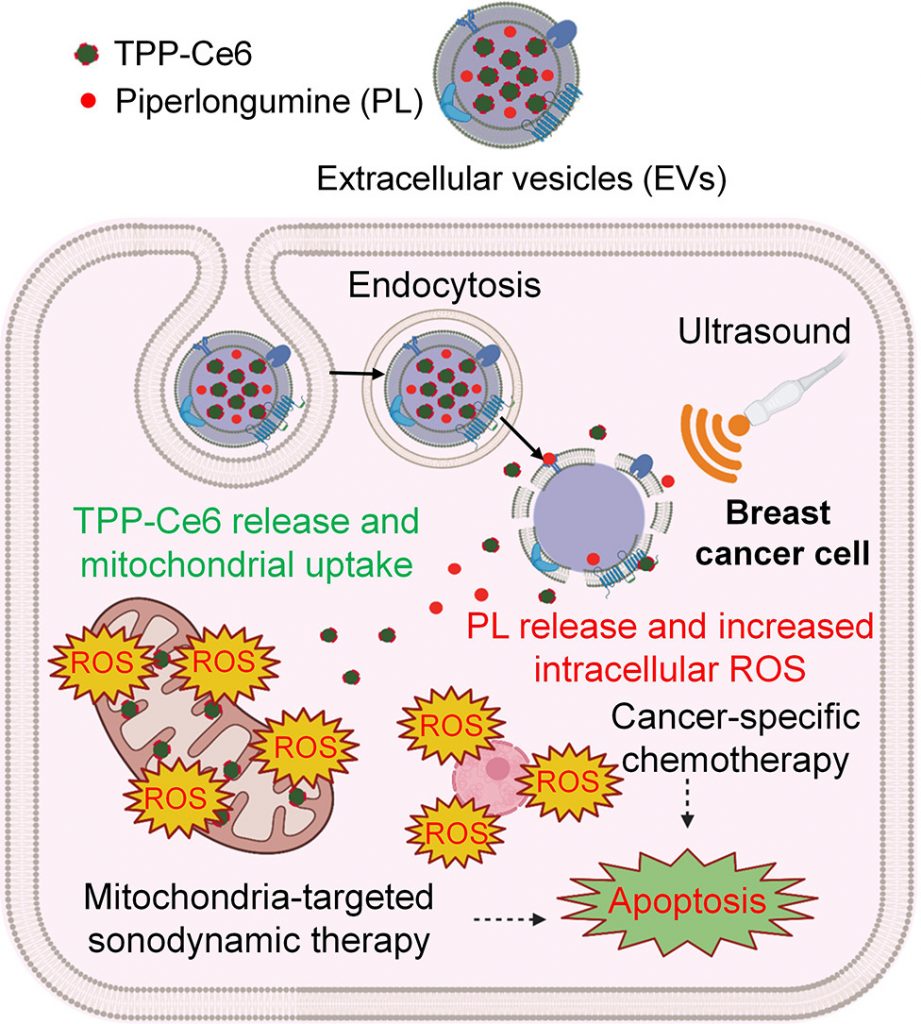Breakthrough Sonodynamic Therapy Utilizing Extracellular Vesicles for Targeted Cancer Treatment

In a groundbreaking study, Cao et al. from Incheon National University (Korea), have harnessed the power of extracellular vesicles (EVs) to revolutionize sonodynamic therapy (SDT), presenting a promising avenue for noninvasive and targeted cancer treatment. SDT utilizes ultrasound (US) to combat deep-seated tumors, but its clinical efficacy has been hindered by the challenges associated with the stability and pharmacokinetic properties of sonosensitizers.
The study, published in the Journal of Controlled Release (Elsevier), focuses on the integration of EVs as clinically available nanocarriers to address these limitations effectively. Researchers successfully loaded Chlorin e6 (Ce6), a sonosensitizer, into EVs, enhancing its delivery to cancer cells. To further augment SDT efficacy, the sonosensitizer was conjugated with a mitochondria-targeting triphenylphosphonium (TPP) moiety, strategically designed to impact the critical subcellular organelles that regulate cell survival and death.
Piperlongumine (PL), a cancer-specific chemotherapeutic agent known for its pro-oxidant properties, was co-encapsulated into EVs alongside TPP-Ce6. This dual-therapy approach aimed to achieve efficient and selective anticancer activity. The EVs significantly amplified the internalization of TPP-conjugated Ce6, resulting in enhanced intracellular reactive oxygen species (ROS) generation upon exposure to ultrasound in human breast cancer cells (MCF-7).
The study showcased that EVs encapsulating TPP-Ce6 effectively destroyed mitochondria under ultrasound irradiation, leading to potent anticancer activity. The addition of pro-oxidant PL into EVs further boosted SDT efficacy by inducing excessive ROS generation in MCF-7 cells. Importantly, EVs co-encapsulating TPP-Ce6 and PL demonstrated cancer-specific cell death through selective apoptosis triggered by PL.
In vivo experiments conducted on MCF-7 tumor-xenograft mice revealed that EVs co-encapsulating TPP-Ce6 and PL effectively accumulated in tumors after intravenous injection. Remarkably, treatment with these EVs, combined with ultrasound, significantly inhibited tumor growth without causing systemic toxicity.
This groundbreaking research establishes the feasibility of utilizing EVs for biocompatible and cancer-specific chemo-SDT, opening new avenues for noninvasive cancer treatment modalities. The findings hold significant promise for advancing the field of targeted cancer therapies, offering hope for enhanced treatment outcomes with minimal side effects.
Did you like the news ? Please share it with your circle.